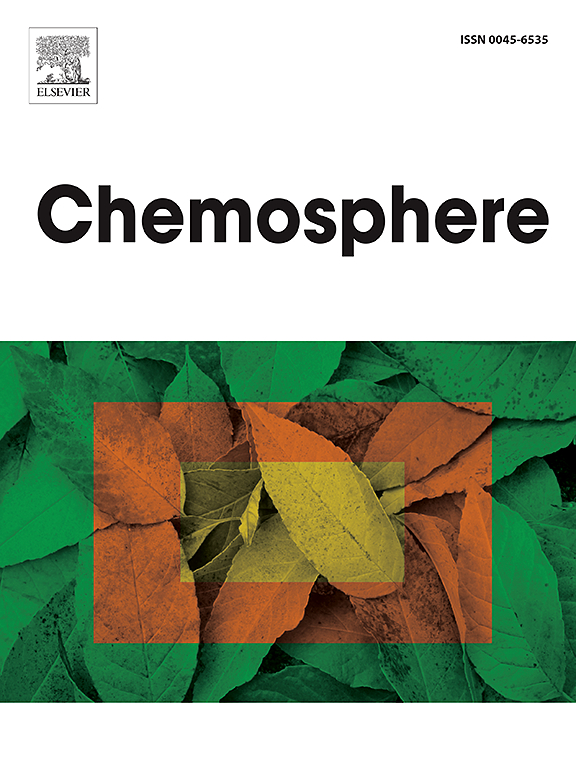Comparative photocatalytic degradation of cationic rhodamine B and anionic bromocresol green using reduced ZnO: A detailed kinetic modeling approach
IF 8.1
2区 环境科学与生态学
Q1 ENVIRONMENTAL SCIENCES
引用次数: 0
Abstract
The photocatalytic degradation of rhodamine B (RhB), a cationic dye, and bromocresol green (BCG), an anionic dye, was investigated using oxygen vacancy-enriched ZnO as the catalyst. These dyes were selected due to their differing charges and molecular structures, allowing for a deeper exploration of how these characteristics impact the degradation process. The catalyst was prepared by reducing ZnO with 10% H2/Ar gas at 500 °C, and the introduction of oxygen vacancies was confirmed using various characterization techniques. A detailed kinetic model was developed to track dye degradation, accounting for adsorption and photocatalytic degradation simultaneously, both in solution and on the catalyst surface. The model incorporated the effect of pH on adsorption by considering the dissociation behavior of the dyes and their respective pKa values. The study revealed that degradation primarily occurs on the catalyst surface at acidic pH, while at basic pH, degradation is more pronounced in the solution. DFT calculations supported these findings, showing that the electrostatic potential of the dyes shifts depending on pH, influencing their interaction with hydroxyl radicals or the catalyst surface. Quantum yield calculations indicate peak values of 6.32 10−5 molecules per photon for RhB at pH 11, and 4.20 10−5 for BCG at pH 3.
利用还原氧化锌比较阳离子罗丹明 B 和阴离子溴甲酚绿的光催化降解:详细的动力学建模方法。
以富氧空型ZnO为催化剂,研究了阳离子染料罗丹明B (RhB)和阴离子染料溴甲酚绿(BCG)的光催化降解。这些染料因其不同的电荷和分子结构而被选择,从而可以更深入地探索这些特征如何影响降解过程。采用10% H2/Ar气体在500℃下还原ZnO制备催化剂,并通过各种表征技术证实了氧空位的引入。建立了一个详细的动力学模型来跟踪染料降解,同时考虑溶液和催化剂表面的吸附和光催化降解。该模型通过考虑染料的解离行为及其各自的pKa值,纳入了pH对吸附的影响。研究发现,在酸性pH下,降解主要发生在催化剂表面,而在碱性pH下,降解在溶液中更为明显。DFT计算支持了这些发现,表明染料的静电势随pH值的变化而变化,影响它们与羟基自由基或催化剂表面的相互作用。量子产率计算表明,pH值为11时RhB的峰值为6.32 10-5分子/光子,pH值为3时BCG的峰值为4.20 10-5分子/光子。
本文章由计算机程序翻译,如有差异,请以英文原文为准。
求助全文
约1分钟内获得全文
求助全文
来源期刊

Chemosphere
环境科学-环境科学
CiteScore
15.80
自引率
8.00%
发文量
4975
审稿时长
3.4 months
期刊介绍:
Chemosphere, being an international multidisciplinary journal, is dedicated to publishing original communications and review articles on chemicals in the environment. The scope covers a wide range of topics, including the identification, quantification, behavior, fate, toxicology, treatment, and remediation of chemicals in the bio-, hydro-, litho-, and atmosphere, ensuring the broad dissemination of research in this field.
 求助内容:
求助内容: 应助结果提醒方式:
应助结果提醒方式:


